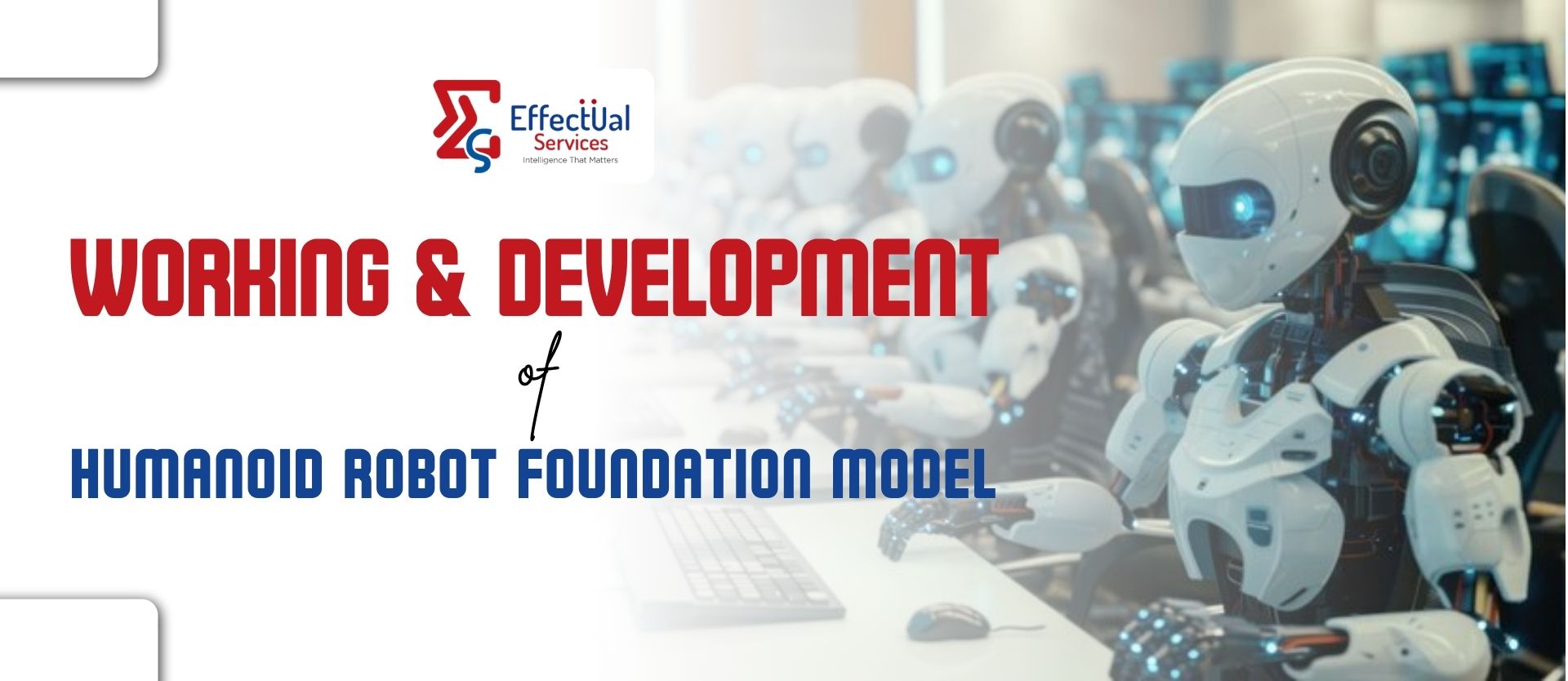Working & Development of Humanoid Robot Foundation Model

How Humanoid Robot Works
Robot learning is driven by adaptive algorithms and comprehensive training in both virtual and real-world settings. This lets humanoid robots acquire and refine intricate skills like bipedal locomotion, object manipulation, and social interactions. Developers use an optimized software stack that includes data ingestion and processing pipelines, training frameworks, and containerized microservices to power scalable and efficient training. AI foundation models, simulation environments, synthetic data, and specialized learning techniques such as reinforcement learning and imitation learning are used to train robots to perform tasks like grasping objects or navigating obstacles in different scenes.
Machine Learning: Humanoid robots are equipped with machine learning algorithms that let them analyze data to learn from past actions and process data from sensors to make informed decisions in real time.
Imitation Learning: Robots can acquire new skills by replicating movements demonstrated by humans. These actions are captured by sensors or cameras, then translated into robotic commands that mimic the observed behaviors. This approach is especially useful for teaching robots nuanced, complex tasks that are difficult to codify with traditional programming methods.
Reinforcement Learning: In this technique, an algorithm uses a mathematical equation to reward robots for correct actions and penalize them for incorrect actions. Through trial and error and the associated reward system, the robot adapts and improves its performance over time.
Recent Development
- In December 2024, SAMSUNG announced an increase in its stake in Rainbow Robotics to 35% by exercising a call option, making the company its subsidiary. This move aims to accelerate the development of advanced robotics, including humanoid robots. Rainbow Robotics, founded in 2011 by researchers from KAIST's Humanoid Robot Research Center, is known for developing Korea's first two-legged walking robot, "Hubo."
- In October 2024, KAWADA ROBOTICS CORPORATION (Japan) launched the NEXTAGE Fillie humanoid robot at the 'Monozukuri World Osaka (Machine Components Technology Exhibition Osaka)' held at INTEX Osaka from October 2nd to October 4th. NEXTAGE Fillie was showcased at the Mechanical Components Technology Expo Osaka, highlighting its advanced capabilities in robotics and automation.
- In July 2024, PAL Robotics (Spain) deployed the Kangaroo robot at Vienna University of Technology (TU Wien) to strengthen academic collaboration.
- In November 2024, ROBOTIS (South Korea) partnered with MIT (US) to develop "Physical AI," an advanced robot technology focusing on human-level physical intelligence. Supported by KIAT and the Ministry of Trade, Industry, and Energy, this collaboration aims to enhance precision robotics for industrial applications by integrating reflexive AI and high-level sensing systems. The technology will be applied to ROBOTIS' collaborative robot, OpenMANIPULATOR-Y (OM-Y), to expand its operational efficiency across diverse environments.
- In August 2024, ROBOTIS (South Korea) unveiled a new reducer product, Reducer, with improved torque and an expanded hollow size at the 2024 International Conference on Robotics and Automation (ICRA) in Yokohama, Japan. The product is designed for enhanced efficiency and user convenience and is scheduled for release in the second half of the year.
- In September 2023, UBTECH collaborated with the University of Hong Kong (HKU) to research humanoid visual perception algorithms and technologies for service robots. This collaboration focuses on advancing the development of visual perception capabilities in humanoid robots, enhancing their ability to interact with and navigate complex environments, ultimately improving their service efficiency and adaptability.
Explore Part 1 : Humanoid Robot Foundations: A Complete Breakdown
Solutions Driving Innovation & Intelligence
Enabling Fortune 500's, R&D Giants, Law firms, Universities, Research institutes & SME's Around The Globe Gather Intelligence That
Protects and Nurtures Innovation Through a Team of 250+ Techno Legal Professionals.


